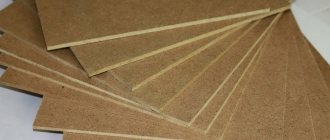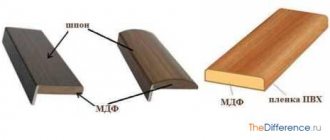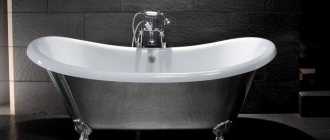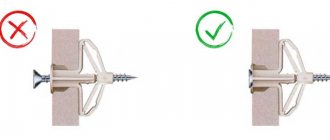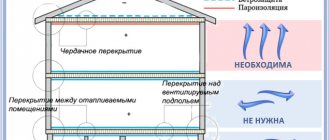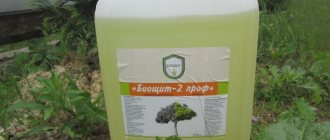Low-growing, beautifully flowering plants do not exceed 30 cm in height. They are compact, decorative, and have abundant flowering. They are indispensable in the first row of flower beds, borders, ridges, and are used in the design of alpine slides and rockeries. Low-growing flowers for a flower bed can be found both in the group of annuals and among perennials. To create spectacular long-flowering compositions on the site, it is better to use both.
Low-growing flowers are planted both individually and in combination with each other, as well as with tall species
Tips for selection and care
Annuals allow you to change the shape and color of the border every year - this is a plus. But every year in the spring the gardener will have to plant border plants - and this is a minus.
On the contrary, perennials free up our time at the beginning of the season, when there is already enough work. But you will have to come to terms with the fact that the design will be laid out several years in advance.
On the other hand, with a successful solution and a correctly composed composition, a perennial border will delight you every year with its color scheme.
The final decision on which flowers to plant along the paths, around the flower bed, is made by the gardener, focusing on his capabilities and preferences.
Annual plants for borders
A perennial border has many benefits, but it is too permanent—the garden looks the same every year. If you want variety, you can always plant beautiful annual flowers along the edge of the path, along the fence or under the trees. There is more trouble with them, because to create a border that will please the eye from the first warm days, you will have to grow seedlings. For amateurs, this is not a problem, but a pleasure; others can buy ready-made seedlings at the market or at a garden store.
Many annuals can be planted directly from seeds into the ground, but in this case you will have to wait a long time until they sprout, get stronger and bloom. But flowers grown from seeds yourself will cost much less. Especially if you collect your seeds in the fall. In this case, you can immediately plant plants densely, without waiting for them to grow.
Bright border of petunias Source iz-town.ru
Annuals for creating floral borders
Border annuals, especially seedlings planted in the ground, will delight you with flowers from early summer until cold weather. Annuals do not live long, but leave a bright mark.
We will select the best ones from a large palette of colors, so that later, combining them in various combinations, we will get a beautiful frame for your flower painting.
Catalog of annual border flowers
Of the many annual plants, the most interesting in this case are low-growing annuals that can shade and emphasize the beauty of a selected fragment of a garden plot. The best varieties of annual plants to decorate your garden borders:
Ageratum (long-flowered)
In order to get good seedlings, the seeds should be sown in the third decade of March or early April. Ageregatum begins to bloom in June, and flowering ends only in September.
Alyssum
The flower can be sown in early spring in a permanent place under the film. It will take one and a half months from the appearance of the first shoots to the start of flowering.
Pansies
In the gardening community, violet tricolor is known as the “pansy.” A characteristic feature of pansies is their beautiful, large flowers with a rich tricolor color.
Arabis rezuha
The flowering period is long, with a large number of yellow, white pink and purple flowers. Propagated by seeds. The simplest thing is to sow before winter in October. Those who are not looking for simple ways grow rhizomes through seedlings. Seeds for seedlings are sown in April.
Marigold
The ability to bloom all summer long is what explains the incredible popularity of the flower. For all their unpretentiousness and outward simplicity, marigolds amazingly transform gardens, parks, and flower beds.
Begonia semperflorens everblooming
Begonia semperflorens has several names:
- ever-blooming;
- always blooming;
- elegant. With proper care, even without pruning, Begonia Everblooming has compact and neat bushes.
Dahlia
The palette of shades of these beautiful colors knows no bounds. Gardeners love these bright flowers, which is why they sow seeds every year for seedlings to admire them all summer long.
Decorative cabbage
In creating a border it is used not only on its own, but also in a mixborder with many other colors.
Iberis
With abundant flowering, the plant is almost completely hidden under the flower cap.
Daisy
As border flowers, daisies frame paths, flower beds, borders and mixborders. The daisy grows on any soil, but blooms more luxuriantly on well-fertilized loams.
Matricaria feverfew
A light-loving plant, it requires an open, well-lit space for planting. Responsive to feeding.
Petunia
Intense flowering and the formation of a large mass of greenery requires constant replenishment of food and water. On hot days, petunia is watered twice.
Salvia sparkling (Sage salvia)
Salvia sparkling, another name is brilliant sage, is an extremely heat-loving perennial. Therefore, in our regions it is grown as an annual crop.
Cineraria maritima
The unpretentiousness and original appearance of Cineraria explain its use in the design of flower beds, flower beds, borders and other landscape elements.
Options for using low-growing flowering plants
The beautiful flowering plants discussed above are planted both solo and in mixed groups. There are many options and planting patterns.
Design of borders along paths
White alyssum and violas may not be too original, but they create a bright ensemble and a joyful mood
A path from the gate to the house accompanied by marigolds is a good option for a summer residence
Container flower beds
Since almost all low-growing annuals are suitable for growing in container culture, in addition to stationary flower beds on the site, they are often planted in pots, flowerpots, boxes, including hanging ones. It turns out to be a kind of movable, mobile flower bed, which can be conveniently placed near the house, on an external windowsill, in a gazebo, on a terrace or in a garden.
Ampelous petunias become a bright element of the decor of the local area and recreation areas
A wide variety of household containers can be used as containers: barrels, bathtubs, basins, tubs, watering cans, buckets - there are many ready-made ideas. Why not implement them on your site?
Mini flower garden in Russian style on the grass - alyssum, marigolds and viola flaunt in a high metal basin
Original flower beds
Low flowers can set the tone for the entire composition, especially if there is a general idea in its composition.
Blue and blue lobelia, white alyssum create the effect of sea foam on the water flow from an overturned large ceramic pot
Low-growing perennial flowers for the flower bed form a single composition with medium and tall plants.
The bluebells in the foreground harmonize well with summer dahlias, snapdragons and echo the delphinium
Rockeries
Stone gardens, alpine slides, rock gardens require special efforts precisely at the planning and creation stage. The floristic component plays a leading role.
The main accent of the composition is rock alyssum
Mostly perennial plants are planted among the stones, but properly selected, abundantly flowering annuals will add a touch of freshness.
Curtains of blue and blue lobelia, white and lilac alyssum create the effect of a stream flowing over the stones
Classification of border perennials
Planting border perennials is more advantageous in terms of labor costs when caring for them. Border perennials, once planted, can grow for several years without replacement. The specific type is chosen in accordance with the intended purpose when designing the composition.
Rules for choosing perennials for forming a border
Plants for the border according to the height of the bush are divided into:
- tall, growing up to 180 cm;
- medium - in the range of 30 - 85 cm;
- low - up to 30 cm.
Border perennial flowers will grow in one place for more than one year, so it is better to draw a color plan of the future flower bed or ridge before planting. At the same time, take into account the timing of the beginning and end of flowering.
What qualities of border perennials still need to be taken into account:
- ability to grow in sun or partial shade;
- the ability to quickly fill the marked area; it is better to choose perennials with an average growth rate;
- maintaining decorative qualities in cool or rainy weather;
- the best plant height for a border is no higher than 50 cm;
- the possibility of growing together in company with other plants.
Perennial flowers and shrubs for borders
Most often, low-growing shrubs and other perennial border plants are planted to create a border. A living border looks brighter and more original in comparison with stone and bricks. Photos and names of plants will help you make your choice.
Agapanthus
This perennial has abundant foliage and inflorescences with a pleasant aroma. The plant does not require specific care.
Balsam
Another name for balsam is flame, which is associated with active and long-lasting flowering. The plant has many species, both annual and perennial.
Periwinkle
The leaves of periwinkle are distinguished by their incredible strength and vitality: their fresh appearance is maintained even under the snow.
Heather
Heather blooms in mid-summer, but the bush will show its full beauty in late autumn. The first frost will change the color of its leaves from green to burgundy and yellow.
Dianthus pinnata
The perennial pinnate carnation lays a leafy stem in the first year after planting, and begins to bloom in the second year of life.
Heuchera parviflora
Most types of heuchera are unpretentious, but this does not apply to soil requirements and lighting. The plant is contradictory: moisture-intensive and loose soil, bright sunlight and partial shade at midday.
Avens
Gravilat is so frost-resistant that in areas with mild winters warmer than minus 18, it does not change the color of the leaves until the new season.
Dicentra
The shape of the dicentra bush is similar to a fern, and the heart-shaped flowers, on bare shoots, hang in impressive clusters.
Tenacious
This herbaceous plant was named tenacious for its exceptional love of life and survival in extreme conditions.
Lavender
To plant lavender, it is better to choose a place illuminated by the sun, however, the flower will grow in partial shade. But in this case you won’t have to count on abundant flowering. Lavender grows well in soils with neutral acidity. We neutralize acidic soil by adding wood ash - this is also a top dressing.
Bloodroot
Of the huge variety of bush cinquefoil varieties, the most popular is Kuril bush tea, used for decorating rock gardens, borders and hedges.
Lobelia erinus
When decorating ridges and living borders, Lobelia is distinguished by its rare color. But with a lack of moisture, lobelia erinus limits growth and drops flowers.
Narcissus
Daffodils are one of the first signs of the onset of real spring. April and May are the time for daffodils to bloom. By mid-summer, the above-ground part of the plant dries out. The bulbs can be dug up to be planted again in August.
Aubrieta or aubretia
An unpretentious ground cover plant, it grows quickly, forming a living carpet, and blooms until winter, which is why gardeners love it.
Primrose
Primrose is also called primrose (prima - first). Primroses are among the first to bloom in the spring, some species in the summer.
Hosta funkia
What hostas are famous for is the leaves that form a dense bush, but hosta flowers are inexpressive. The lifespan without transplantation is impressive - up to 30 years.
Chrysanthemum
The summer season ends, and the “Queen of Autumn” - the chrysanthemum - comes into its own. Like the aster, it blooms from August until the cold weather.
Chistets woolly
This plant attracts with its original woolly pubescence. The fibers dotting the bush create the illusion of velvet. Chistets is great for creating a living border.
Japanese spirea
Spiraea is valued for its decorative properties and ability to withstand pruning. Low-growing varieties are especially good at decorating borders.
Advantages and disadvantages of border perennials
Recommendations for designing flower borders
To beautifully frame a garden path, lawn, or flower bed, choose low-growing plants that are planted in a narrow strip.
Before planting, to create a clear border line, you need to mark the boundaries of the bed: drive in pegs and stretch a rope between them on straight sections, and lay a row of pebbles on rounded sections.
Elements of landscape design, emphasized by a living floral border, will look stylish and bright if you follow simple rules when creating a border:
- the color scheme of border plants should contrast with the color scheme of the lawn, flower bed, edging;
- To ensure uniformity of the border, a planting of plants of the same species and variety is formed; a harmonious combination of companion species with different growth heights is permissible;
- flowers of compact size are planted in two rows in a checkerboard pattern so that empty spaces do not form;
- the border should remain decorative throughout the season: select plants with a long flowering period or bright decorative foliage.
Important! Plants with similar care requirements are placed in one border: watering, soil, fertilizing.
Herbs
Perennial grasses
Sedge Morrow Variegata
Ophiopogon flat-arrowed
foxtail pinnately
Hakonechloa
Gray fescue
Imperata
Bulbous border flowers
Of the bulbous plants used to create flower borders, crocuses, tulips and daffodils are most often used. Bulbs are planted in the fall - in September and October, depending on the region. When cultivating the soil, all plant residues are carefully removed. The planting depth of the bulbs is chosen depending on the type.
The disadvantage of arranging a bulbous border is the significant labor costs
Perennial plants in floral design
When choosing plants to create a flower border, preference should be given to perennial plants, the ground part of which dies in the fall, the roots overwinter in the ground. Perennial border flowers do not need to be planted every year; they are unpretentious, resistant to drought and frost, quickly recover from accidental damage, and bloom from early spring to late autumn.
Rules for creating compositions
An important condition when creating flower arrangements is to use predominantly low-growing plants, so that over time you do not end up with a hedge instead of a border. That is why the shortest ones are planted closer to the edge.
A few simple rules will help you create a flower border when decorating paths on your site:
- plants that are planted as edging should be of contrasting shades;
- provide a reserve of space for the possible growth of low-growing perennials;
- The boundaries of the borders can be trimmed with special garden shears, but it is better to choose crops with weak growth, then the paths will remain with clear edges for a long time.
Garden paths are decorated with edgings, mixborders and borders using a wide variety of plants, and without studying the characteristics of growing each of them, a positive result is not guaranteed.
Features of the formation of flowering borders
Low-growing perennial flowers for the border, low flowering annuals, and border grass are equally good for decorating the edges of paths and flower beds.
When planting plants in borders, you need to consider:
- growing conditions: for light-loving people, select sunny places; for shade lovers, plant in shaded areas;
- growth rate and size of an adult plant: slow-growing species will maintain geometric planting throughout the season;
- distance between plants and the edge of the bed: border perennials with a strong root system require more space than annuals with a shallow root system.
Reference. Standard dimensions of a flower border: 50 cm width, height no more than 50 cm.


